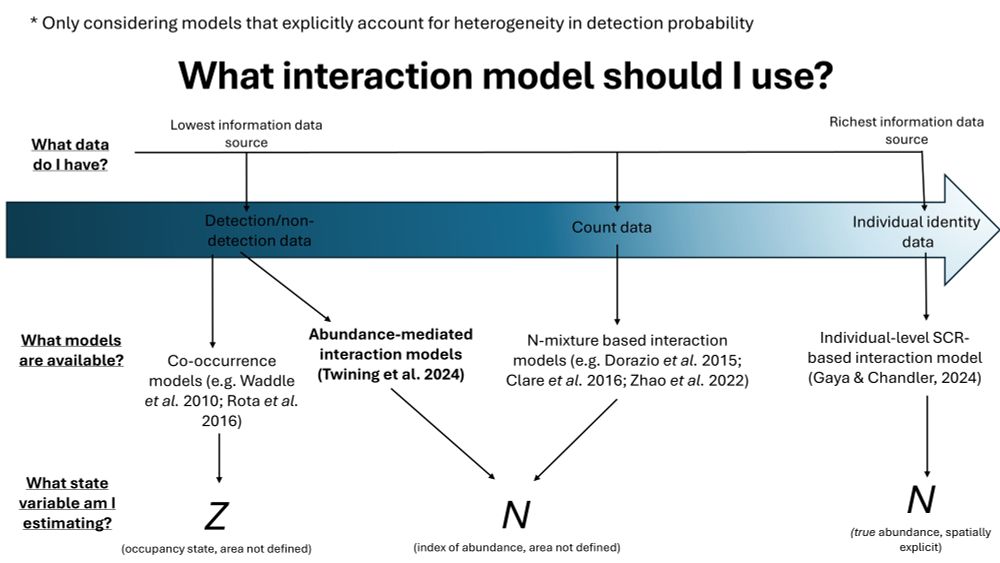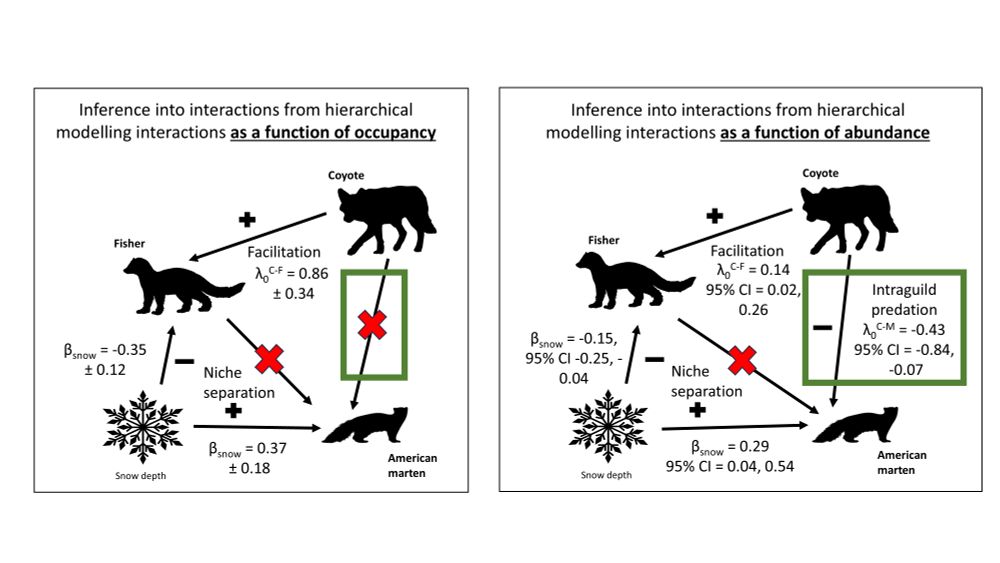There are a bunch of interaction models out there, when should you think about using this one?
Check out our flow diagram to help you decide! (13/13)
Please share widely and contact me if you can't access the paper!

There are a bunch of interaction models out there, when should you think about using this one?
Check out our flow diagram to help you decide! (13/13)
Please share widely and contact me if you can't access the paper!
We detect interactions between species that we did not detect using co-occurence models! (11/13)

We detect interactions between species that we did not detect using co-occurence models! (11/13)



What to do in the common scenario where interactions are mediated by abundance? (6/13)

What to do in the common scenario where interactions are mediated by abundance? (6/13)
Check out these two scenarios thinking about interactions between foxes and coyotes.
In which one might we get useful inference thinking about interactions as a function of occupancy?
(5/13)

Check out these two scenarios thinking about interactions between foxes and coyotes.
In which one might we get useful inference thinking about interactions as a function of occupancy?
(5/13)




